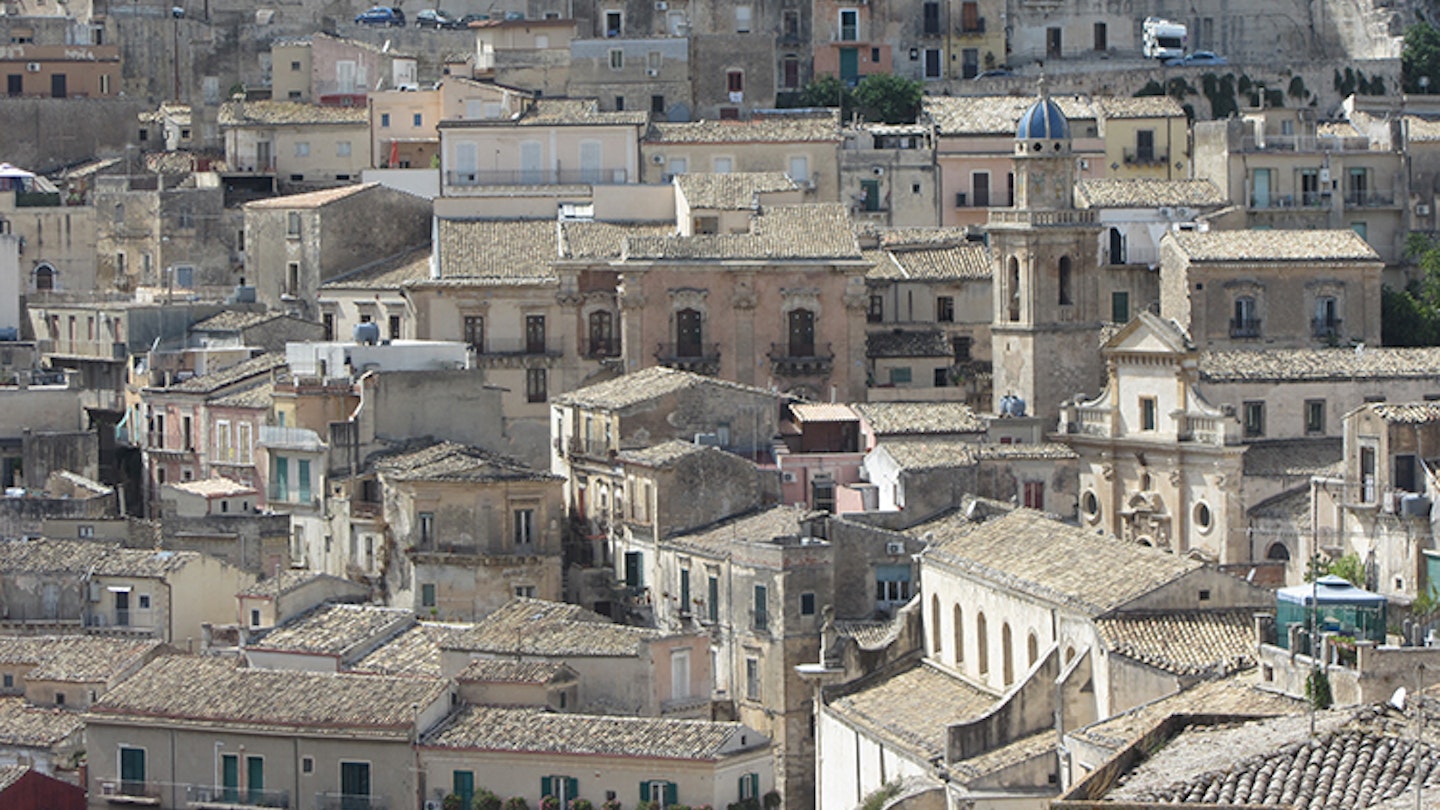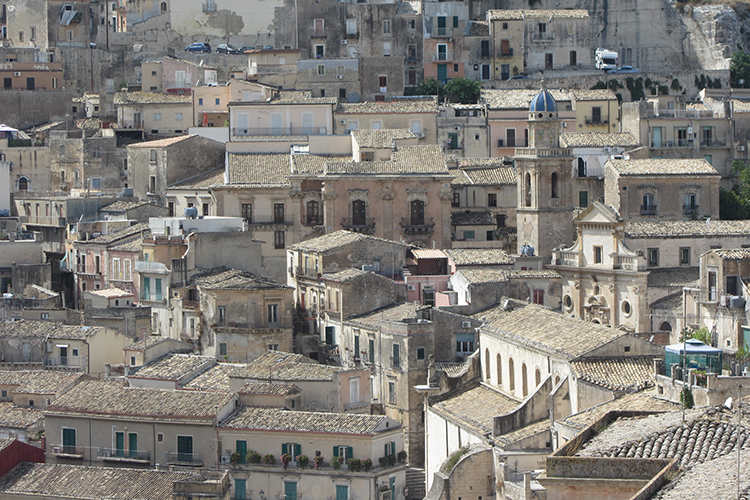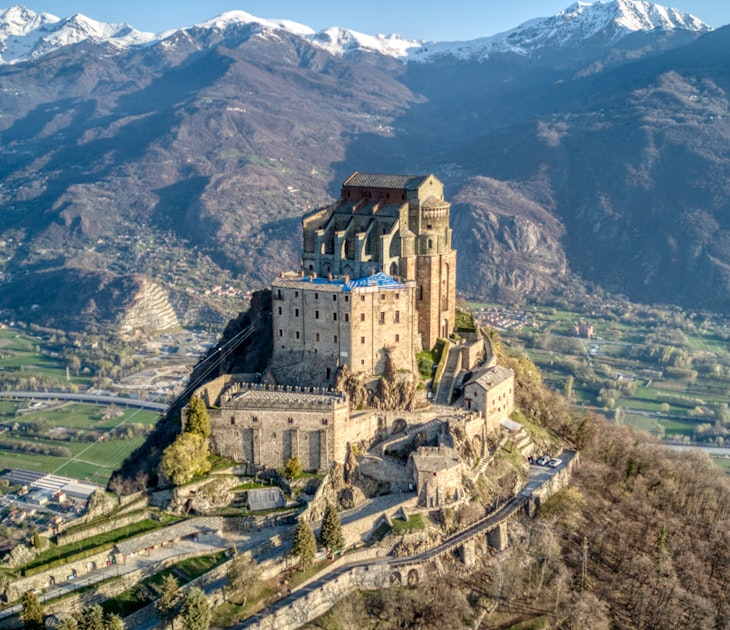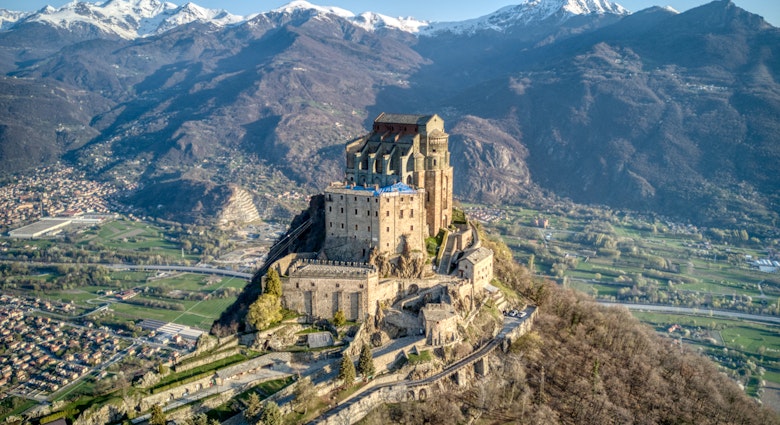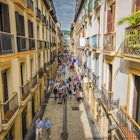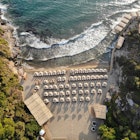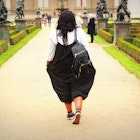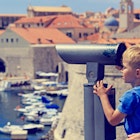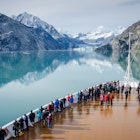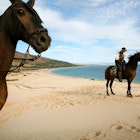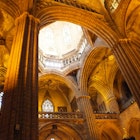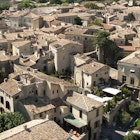Packed with Unesco World Heritage sites, sandy Mediterranean beaches, and hills striped with dry stone walls and dotted with carob, almond and olive trees, the southeastern corner of Sicily has a character all of its own.
Despite the presence of several glorious cities - Ragusa, Modica, Scicli and Noto, each of which has a distinct atmosphere, festivals and mouth-watering food and wine - the region remains little visited outside August.
That looks set to change as a new airport in Comiso opens up the region to more visitors from Europe and elsewhere. Twice-weekly Ryanair flights began this month from London. Flights from Brussels and Rome also began recently, and seasonal charters are likely to follow.
Comiso airport lies on the outskirts of the pleasant little town of the same name, which is just a 20-minute drive from Ragusa and the beach resort of Marina di Ragusa. There are buses, taxis and car hire available outside the well-designed, uncrowded new terminal building. So now is the time to hop on a flight to southeastern Sicily - a place to wander and wonder, relax, eat, drink and enjoy the friendliness of the local people.
Ancient cityscape in Ragusa. Image by Juliet Rix / Lonely Planet.
Top 10 things to see and do
Ragusa Ibla
A maze of glowing limestone streets of Baroque palazzi and churches clings to the hillside. Ibla has 14 Unesco World Heritage buildings in an area of less than one square kilometre. At the centre of this compact city is the delightful, sloping, palm-adorned Piazza Duomo, dominated by the Cathedral of St George. Its curved, columned, luminous facade is one of the most attractive in the region. For a great view, climb the steps towards Upper Ragusa (the modern town) to the terrace of the Church of Santa Lucia and look back at the tiled rooftops, campanile, domes and facades of Ibla lit by the evening sun.
Sun and sea
The south coast is dotted with sandy Mediterranean beaches shelving gently into clear blue sea, which is usually swimmable from June to October. There are a few wild bays, but most beaches have sunbeds, umbrellas, cafes, showers and great gelato. There are charges for sunbeds, but unlike in some parts of Italy, there are good free areas and, outside of August, plenty of space.
Ortigia
The heart of ancient Syracuse, recently restored and revived, Ortigia is a bridge-linked little island off the tip of the modern city. Wander the narrow, often black-paved streets that offer up gems at every turn. In contrast to the relative architectural homogeneity of the Ragusa area, here you'll find everything from the great Greek Temple of Apollo to Byzantine, Norman, Medieval, Baroque and Neoclassical palazzi, courtyards and churches. To one side is the large protected harbour that made Syracuse one of the greatest trading centres in the world. Today Ortigia has an understated liveliness, with intimate wine bars and fresh fish restaurants.
The Duomo, Syracuse
This extraordinary cathedral - ancient Greek columns (5th century BC) hold up Islamic crenelations (10th century) behind a Sicilian Baroque facade (18th century) - has been a place of worship in continuous use for some 2500 years.
Syracuse Archaeological Park
Remains of a Roman amphitheatre in the Syracuse Archaeological Park. Image by Juliet Rix / Lonely Planet.
A Greek amphitheatre to rival any in the world is the centrepiece of this archaeological site. Aeschylus saw his later plays premiered here and Greek theatre is today performed (in Italian) from May to June. The site also contains a well-preserved Roman amphitheatre (1st century) and the remains of the massive altar of Hieron (3rd century BC - where up to 450 bulls could be sacrificed to Zeus), as well as impressive ancient quarries.
More information: www.siracusaturismo.net.
Catacombs
This region came to Christianity early and is dotted with catacombs. Syracuse has a vast complex (3rd to 6th century) beneath the little ruined church of San Giovanni. A 30- to 45-minute tour (in English) takes you through a grid of underground streets and domed caverns (once Ancient Greek water cisterns) lined with rock-cut tombs, some arched and once colourfully painted.
More information: www.kairos-web.com.
Noto’s main street
The Duomo in Noto. Image by Juliet Rix / Lonely Planet.
The 1km Corso Vittorio Emanuele leads right through the majestic heart of historic Noto, moving from shady public gardens through the monumental 19th-century arch, Porta Reale, to the imperious Duomo amid Baroque and Neoclassical palazzi. Climb the bell tower of the church of the Jesuit College for an overview before admiring the long college facade (now home to shops and cafes) leading to the delightful Piazza XVI Maggio. Here the Neoclassical theatre looks up at the beautiful golden Baroque facade of the Church of San Domenico.
Modica’s competing cathedrals
During the rebuild of the region after a devastating earthquake in 1693, Modica Alta (upper town) and Bassa (lower) competed in the creation of their new cathedrals, and they continue to compete today. Both are now Unesco World Heritage sites. St George’s stands gloriously on the hillside showing off a Baroque facade modelled on St George’s in Ibla, its interior rich in silverwork and paintings. Walk down flower-adorned steps and narrow alleys to St Peter's, which won the race to be constructed first and is of an earlier Baroque design. St Peter’s sits on Modica’s broad main street (a river until it was covered in 1902), where the city's citizens gather of an evening to promenade, chat, drink and eat.
Modica chocolate
Chocolate arrived in Modica from South America via Spain in the 16th century. The method of making it has changed little since. Taste it, along with other local delicacies, at the city’s wood-panelled chocolate shop, run by the same family for six generations.
More information: www.bonajuto.it/en.
Scicli
Scicli is the smallest and most chilled of the region’s four main Baroque cities. In a valley close to the coast, its main street is a Unesco World Heritage site and its unobtrusive Palazzo Beneventano was described by British art historian (and spy) Anthony Blunt as 'Sicily’s most beautiful Baroque palace'; it certainly has some of the most bizarre gargoyles. Scicli is also home to the Scicli Group of contemporary artists and there are several interesting little galleries showing their work.
An ornate balcony in Ragusa, Sicily. Image by Juliet Rix / Lonely Planet.
Itineraries
For a short relaxed trip: start in Ragusa, move on to Modica, then Scicli, before heading for the coast at Marina di Ragusa to relax on the beach before returning to Comiso Airport.
For a longer trip: after the beach, head up to Noto (under an hour), then Syracuse (about 40 minutes on a fast motorway), before heading back to Comiso or on up to Catania (another 40 minutes by motorway) to fly home.
Eating
With wild capers, local aubergines and tomatoes (fresh or sundried), peppers, olives, fresh fish and cheeses made from the milk of a special breed of Modica cow, you can hardly go wrong. Throw in some strong, full-flavoured Sicilian wines, and dishes ranging from Michelin-starred inventiveness to traditional fare, and it's fair to conclude that this area has great food for every budget.
- Ristorante Duomo (31 Via Capitano Bocchieri, next to the Duomo, Ragusa Ibla – www.ristoranteduomo.it): in Palazzo La Rocca, with the feel of an aristocratic residence, chef Ciccio Sultano uses traditional Sicilian traditional food as the starting point for his inventive two Michelin-starred cuisine. Great wines as well. Deep pockets required.
- Osteria dei Sapori Perduti (228-230 Corso Umberto I, Modica – www.osteriadeisaporiperduti.i ): delicious and inexpensive traditional local food. Try scaccia (thin pasta-bread layered with tomato and ricotta), mini arancini (stuffed fried rice balls), and cabonata (aubergine, tomato, peppers and olives), and pastas with ricotta, meat or beans, followed by cannoli (sweet ricotta in fried pastry rolls) or cinnamon-flavoured jelly.
- Pura Follia Pizzeria (Piazza Busacca, Scicli – www.facebook.com/pages/Pura-Follia): great Sicilian pizza specials in the heart of historic Sicli.
- Antica Locanda da Enrico (189 Via vittorio Veneto, Ortigia, Syracusa – www.ristorante-anticalocanda.com): relaxed checked-tableclothed family-run restaurant one road in from the sea, the source of its daily fresh fish.
There is great gelato all over the region. In Marina di Ragusa’s main square (Piazza Duca Degli Abruzzi), Caffe delle Rose sells lipsmackingly good gelati. For something different, pop next door to Mylk for Buffalo milk gelati, or in Ragusa Ibla try wine-flavoured ice cream at Gelati di Vini (Piazza Dumo – www.gelatidivini.it).
Sleeping
Restoration of old buildings has produced some wonderful accommodation in southeastern Sicily’s historic cities. The latest development is Albergo Diffuso, hotels made up of fully serviced rooms and apartments spread over several streets with a central reception and breakfast room. There are excellent examples in Ragusa, Scicli and Modica:
- Hotel Dell’Orologio (Via Ioppolo, Ragusa Ibla – www.hoteldellorologio.com): newly opened, with more rooms and a breakfast room to come in October this year, followed by a terrace bar in 2014. The ‘hotel’ offers suite-sized rooms and apartments with modern kitchens and bathrooms and antique bedrooms decorated with good quality local contemporary art. Some have stunning views over historic Ragusa.
- La Case Dello Zodiaco (26 Corso Marconi, Modica – www.lecasedellozodiaco.it): attractive small flats in six houses on narrow streets among local residents in historic Modica. Parking – and Modica chocolate – provided.
- Scicli Albergo Diffuso (15 Via Francesco Mormina Penna – www.sciclialbergodiffuso.it): rooms and apartments within 300m of the main square, where full breakfast is provided at the Millennium Cafe.
B&Bs are also inexpensive (especially for solo travellers) and a cosy way to get a feel for the city.
- Giardino sul Duomo B&B (24 Via Capitano Bocchieri, Ragusa Ibla): relaxed designer B&B with a lush garden affording panoramic views over Ragusa. Excellent Sicilian-international breakfast, ideal location and helpful owners.
- B&B Al Teatru (15 Viadel teatru, Ortigia, Syracusa – www.alteatro-siracusa.com): two comfortable rooms in the home of friendly local owners right in the heart of Ortigia, a minute from Piazza Duomo.
Find more B&Bs at www.bed-and-breakfast.it and http://www.comune.ragusa.gov.it/turismo/dormire/bed.html.
More information (in Italian)
Juliet Rix is a writer and broadcaster who travelled halfway round the world before she was two and has never managed to shake off the bug. She has just started tweeting at @julietrix1.
It's one of the world's most visited countries, but Italy can still surprise and delight. Find out where and how with Lonely Planet's Italy travel guide.
Transform your visit to the bel paese (beautiful country) into a work of art by booking one of Lonely Planet's expert-recommended hotels and hostels in Italy.
